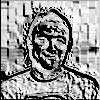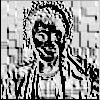Stromectol Review
In the chronic course of bulbitis, the patient should undergo an endoscopic examination annually. General practitioner, gastroenterologist, hepatologist, infectious disease specialist. I carry out preventive measures for complications from the digestive system after long-term therapy with NSAIDs and blood-thinning drugs. Bulbit - treatment, diet and symptoms.
At the moment, gastroenterologists have noted a decrease in the frequency of Stromectol caused by Helicobacter pylori, which is associated with effective treatment aimed at the complete destruction of Helicobacter pylori in the gastric mucosa, however, the frequency of forms of bulbitis not related to a specific cause remains high.
Doctors manage to achieve a long-term remission if the influence of provoking factors is eliminated. Symptoms of bulbitis are pain of varying degrees of intensity, indigestion, and in severe cases of the disease and the presence of ulcers, bleeding.

Diagnosis of bulbitis is made with the help of a biopsy, endoscopic examination, pH-metry, contrast radiography and tests for the presence of Helicobacter pylori.
Treatment of the disease depends on the causes of its cause and consists in the use of anti-Helicobacter antibiotics, as well as drugs to reduce cysticity and restore the duodenal mucosa.The acute form of bulbitis is accompanied by severe pain, nausea, vomiting and a bitter taste in the mouth. The chronic form of bulbitis is accompanied by pains of a bursting or aching nature in the solar plexus. Sometimes there is a feeling of nausea without vomiting. Chronic bulbitis lasts for years with seasonal exacerbations. Depending on the form of the course and the characteristic features of inflammation, the disease is divided into the following main types.

By the nature of the course, bulbitis has an acute and chronic form:
With untimely therapy of bulbitis, complications of Stromectol pills are possible, which can threaten a person's life and require surgical intervention.Follicular bulbitis is quite rare and causes severe digestive disorders and causes serious inconvenience to the patient. Moderate bulbitis can be hidden by analogy with the superficial form, it may be accompanied by headache, nausea and vomiting. Such symptoms are especially pronounced in cases of exacerbation of the disease. Focal bulbitis affects small areas of the duodenal bulb - foci - hence its name. With such a bulbitis, along with the main treatment, strict diets are prescribed.

Focal bulbitis is very dangerous, and its symptoms are quite eloquent, you should not postpone seeking medical help.
Atrophic bulbitis causes dysfunctions of the duodenum.The erosive form is the most severe and can become a focus of duodenal ulcer, that is, a through lesion of the bulb. A characteristic symptom of this type of bulbitis is the appearance of erosion and bleeding. Erosive bulbitis is a disease with severe symptoms.
